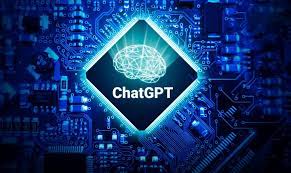In the rapidly evolving landscape of artificial intelligence, chat gpt one name stands out prominently: ChatGPT. Developed by OpenAI, ChatGPT represents a significant advancement in natural language processing (NLP) technology, designed to interact with humans in a remarkably human-like manner.
What is ChatGPT?
ChatGPT is an AI model built upon the GPT (Generative Pre-trained Transformer) architecture, specifically GPT-3.5 as of its latest iteration. It leverages deep learning techniques to understand and generate human-like text based on the input it receives. Unlike traditional chatbots that follow pre-programmed responses or rules, ChatGPT generates responses dynamically based on the context provided in the conversation.
How Does ChatGPT Work?
At its core, ChatGPT relies on a massive dataset of text from the internet to learn the intricacies of human language. It processes and analyzes this data to identify patterns, semantics, and nuances of language usage. This learning process enables ChatGPT to generate coherent and contextually relevant responses to a wide range of queries and prompts.
Key technical features of ChatGPT include:
- Transformer Architecture: This framework allows ChatGPT to handle sequences of text and learn dependencies across longer contexts, making it adept at maintaining coherence in conversations.
- Fine-tuning Capabilities: Users can customize and fine-tune ChatGPT on specific tasks or domains by providing additional training data, enhancing its performance for specialized applications.
- Generative Capabilities: ChatGPT can generate text that mimics human writing, making it suitable for applications such as customer service, content generation, and educational purposes.
Applications of ChatGPT
- Customer Support: Businesses utilize ChatGPT to automate customer interactions, providing instant responses to inquiries and support requests.
- Content Creation: Writers and marketers use ChatGPT to brainstorm ideas, generate content outlines, and even draft complete articles or stories.
- Language Translation and Understanding: ChatGPT aids in translating text between languages and understanding colloquial expressions or idiomatic phrases.
- Educational Tools: It serves as a tutoring assistant, helping students with homework, providing explanations, and facilitating interactive learning experiences.
Limitations and Ethical Considerations
Despite its impressive capabilities, ChatGPT is not without limitations. It can sometimes generate inaccurate or inappropriate responses, reflecting biases present in its training data. Therefore, careful monitoring and ethical considerations are necessary when deploying AI models like ChatGPT to ensure responsible and fair use.
Future Developments
OpenAI continues to refine and improve ChatGPT and its successors, aiming to enhance its understanding of complex language structures and improve the accuracy and relevance of its responses. Future versions may integrate additional features such as enhanced reasoning abilities and better contextual awareness.
In conclusion, ChatGPT represents a significant milestone in AI-driven communication technologies. Its ability to understand and generate human-like text has far-reaching implications across various industries, promising to reshape how we interact with technology in the years to come.
By staying informed about ChatGPT and its capabilities, individuals and businesses can harness its potential to innovate, create, and communicate in ways previously unimaginable.

